Figure Show plot of PV/T versus P for 1.00×10−3 kg of oxygen gas at two different temperatures.
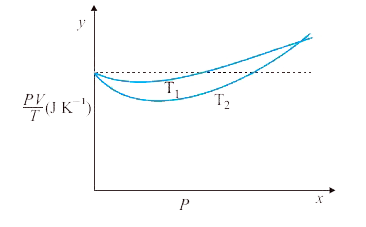
(a) What does the dotted plot signify?
(b) Which is true: T1>T2 or T1<T2?
(c) What is the value of PV/T where the curves meet on the y-axis?
(d) If we obtained similar plots for 1.00×10−3 kg of hydrogen, would we get the same value of PV/T at the point where the curves meet on the y-axis? If not, what mass of hydrogen yields the same value of PV/T (for low pressure high temperature region of the plot) ? (Molecular mass of H2=2.02u,ofO2=32.0u,R=8.31Jmol−1K−1.)
(a) The dotted plot corresponds to .ideal gas behaviour, (b) T1>T2: (c) 0.26JK−1, (d) No, 6.3×10−5 kg of H2 would yield the same value
Topper's Solved these Questions
- KINETIC THEORYBOOK - NCERT BANGLISHCHAPTER - KINETIC THEORYEXERCISE - ADDITIONAL EXERCISE
3 Videos
- KINETIC THEORYBOOK - NCERT BANGLISHCHAPTER - KINETIC THEORYEXERCISE - ADDITIONAL EXERCISE
3 Videos
- GRAVITATIONBOOK - NCERT BANGLISHCHAPTER - GRAVITATIONEXERCISE - ADDITIONAL EXERCISES
4 Videos
- LAW OF MOTIONBOOK - NCERT BANGLISHCHAPTER - LAW OF MOTIONEXERCISE - EXERCISE (ADDITIONAL EXERCISE)
17 Videos
Similar Questions
Fig shows of PV/T versus P for 1.00×10−3kg of oxygen gas at two different temperatures.
(a) What does the dotted plot signify ?
(b) Which is true : T1<T2orT2<T1?
( c) What is the value of PV/T where the curves meet on the Y-axis ?
(d) If we obtained similar plot for 1.00×10−3kg of hydrogen, would we get the same value of PV/T at the point where the curves meet on the y-axis ? If not, what mass of hydrogen yield the same value of PV/T (for low pressure high temperature region of the plot) ? (Molecular mass of H=2.02u, of O=32.0u,R=8.31Jmol−1K−1
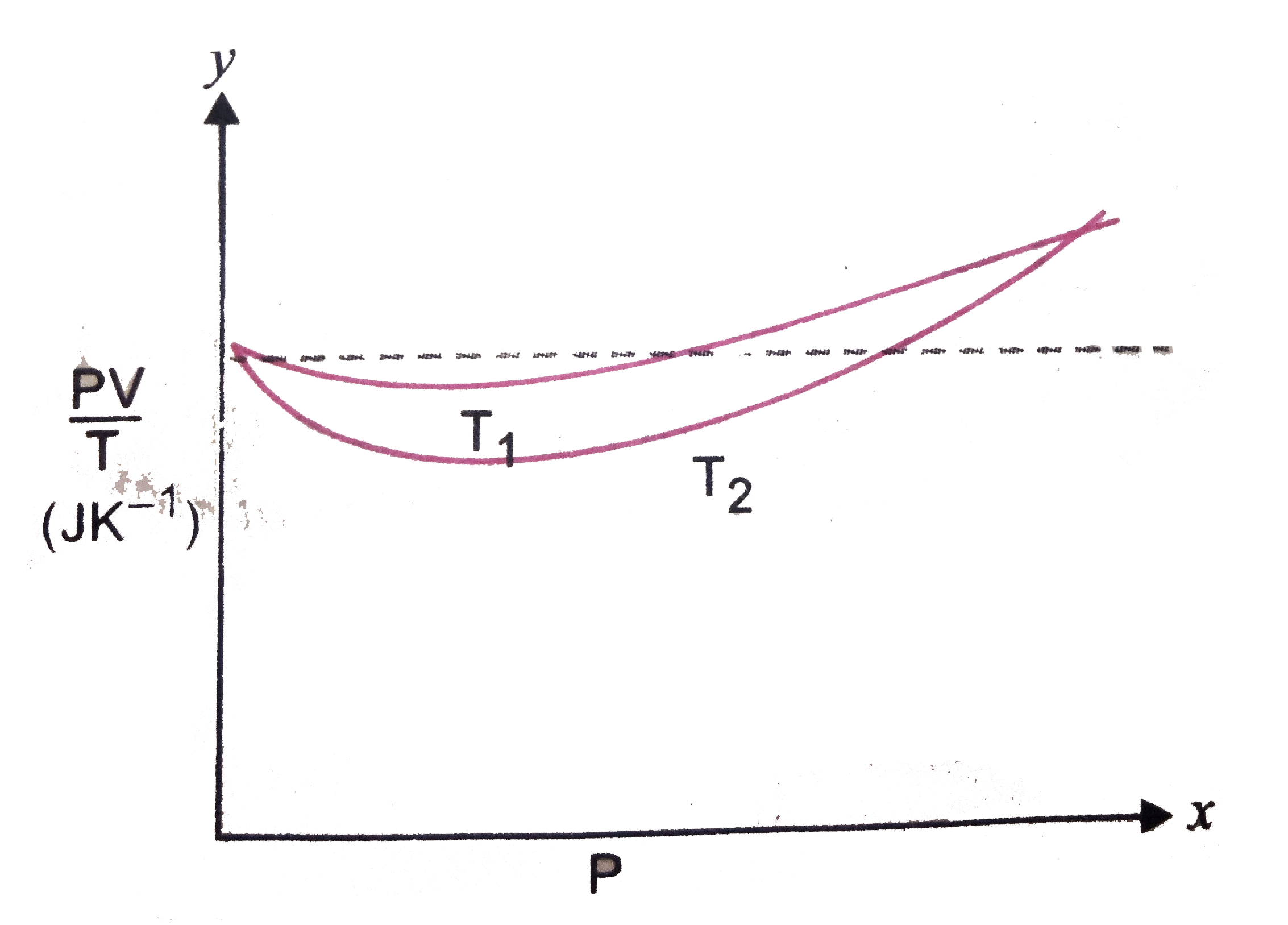
View SolutionFigure shows plot of PV/T versus Pfor1.00×10−3 kg of oxygen gas at two different temperatures.
(i) What does the dotted plot signify?
(ii) Which is true . T1>T2orT1<T2?
(iii) What is the value of PV/T where the curves meet on the y-axis?_E01_262_Q01.png)
View Solution
Knowledge Check
The figure shows the plot of PVnT vs P, for oxygen gas at two different temperatures then
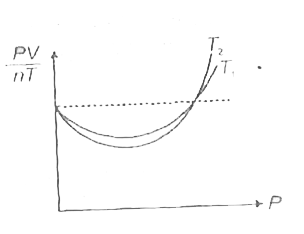 AT1>T2BT2>T1CT1=T2Dmay be (1) & (2)
AT1>T2BT2>T1CT1=T2Dmay be (1) & (2)The figure shows the graph of pVT versus p for 2×10−4 kg of hydrogen gas at two different temperatures, where p,V andT represents pressure, volume and temperature respectively. Then, the value of pVT where the curve meet on the vertical axis, is
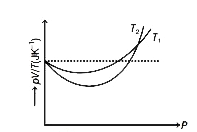 AR5B2R3CR10DR15
AR5B2R3CR10DR15Figure shows graphs of pressure versus density for an ideal gas at two temperatures T1 and T2 Which is correct ?
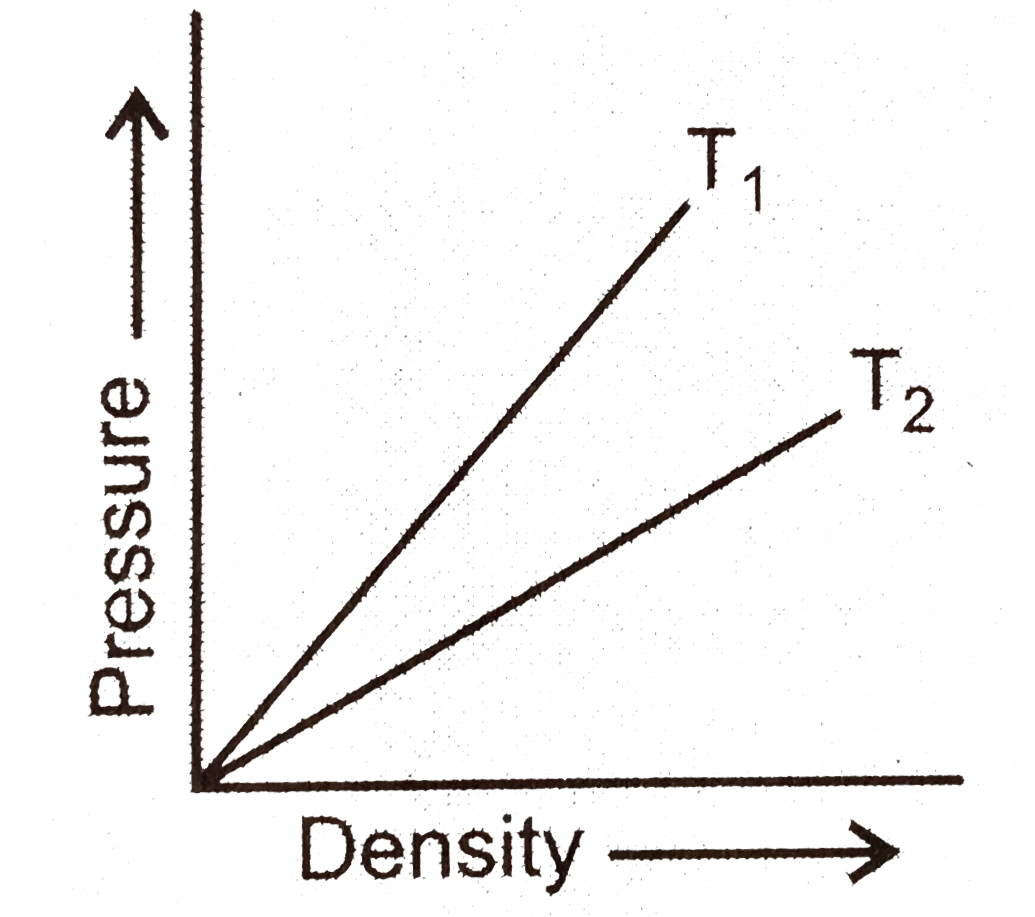 .AT1>T2BT2>T1CBothDNone of these
.AT1>T2BT2>T1CBothDNone of these
Figure shows plot of PV/T versus Pfor1.00×10−3 kg of oxygen gas at two different temperatures.
(i) What does the dotted plot signify?
(ii) Which is true . T1>T2orT1<T2?
(iii) What is the value of PV/T where the curves meet on the y-axis?_E01_262_Q01.png)
View SolutionThe figure shows the plot of PVnT vs P, for oxygen gas at two different temperatures then

View SolutionIf lines T1andT2 touch the curve y=x2−3x+2 at the points where the curve meets the X- axis, then
View SolutionFigure shows graphs of pressure versus density for an ideal gas at two temperatures T1 and T2 Which is correct ?
 .
.
View SolutionIsothermal curves for a given mass of gas are shown at two different temperture T1andT2 in Fig. State whether T1>T2orT2>T1. Justify your answer.
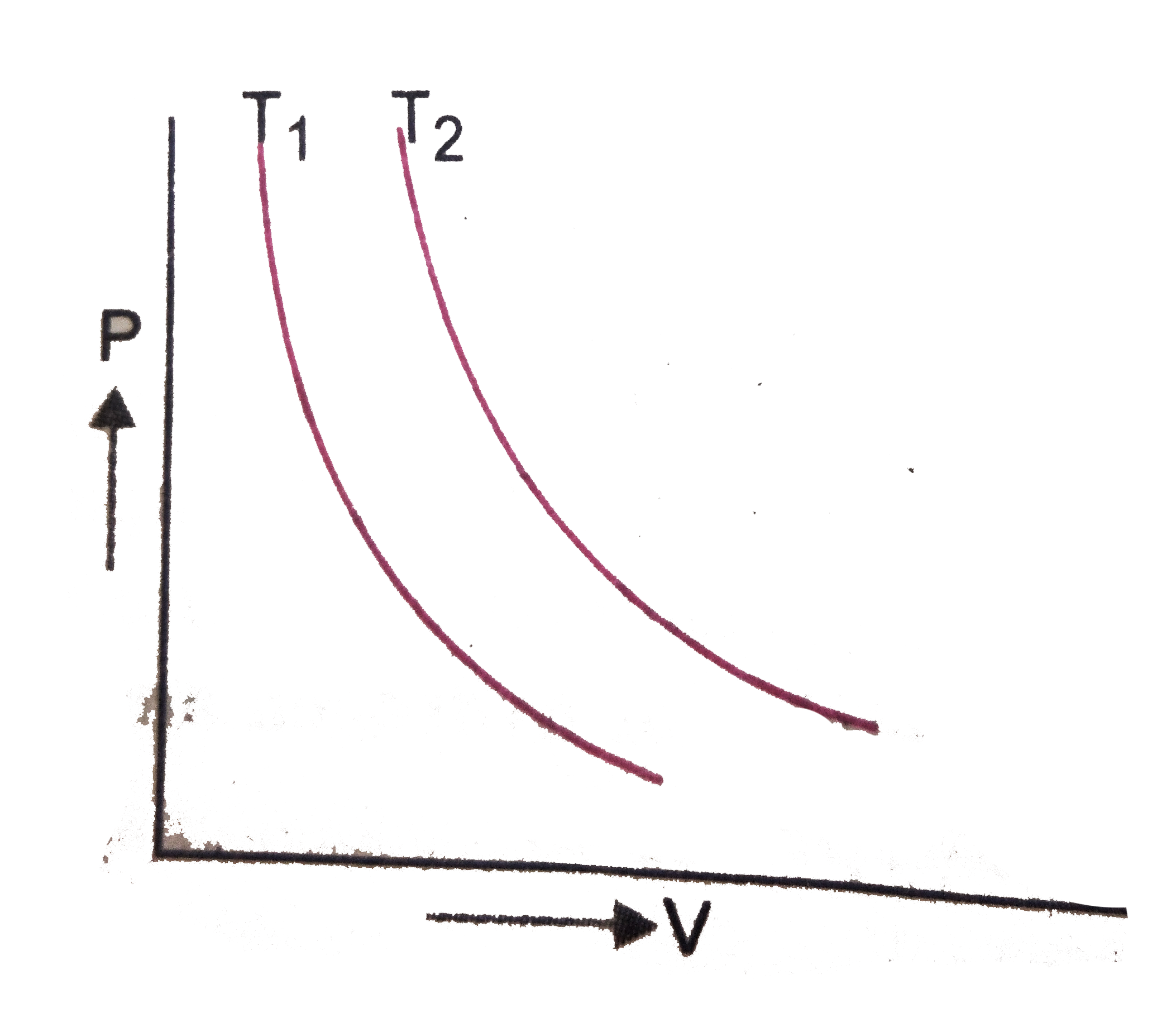
View Solution
